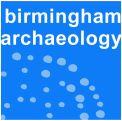Cambridge Street, Birmingham. A Programme of Archaeological Investigations
Birmingham Archaeology, 2017. https://doi.org/10.5284/1045779. How to cite using this DOI
Data copyright © University of Birmingham unless otherwise stated
This work is licensed under the ADS Terms of Use and Access.
Primary contact
Historic England
1 Waterhouse Square
138-142 Holborn
London
EC1N 2ST
UK
Tel: 01793 414700
Fax: 01793 414707
Resource identifiers
- ADS Collection: 2860
- DOI:https://doi.org/10.5284/1045779
- How to cite using this DOI
Introduction

In May 2008 Birmingham Archaeology was commissioned by Capita Symonds on behalf of Birmingham City Council to undertake an archaeological evaluation at Cambridge Street, Birmingham. The evaluation took place as part of an assessment of the impact of the proposed development of the new library on below-ground archaeological remains. The evaluation demonstrated good survival of below-ground archaeological deposits relating to Union Brassworks and the later Winfields Brassworks and the canal basin constructed to serve them.
In January 2009 Birmingham Archaeology was commissioned by Geotechnical Engineering Ltd., acting on behalf of Carillion Building, to undertake an archaeological watching brief during the excavation of geotechnical pits prior to the development of the new library site. A total of 15 test pits were excavated across the development site including Cambridge Street Car Park and Centenary Square. The archaeological deposits encountered in the test pits illustrated that below Cambridge Street Car Park and possibly into Centenary Square the remains of the 19th and 20th century brass works, associated canal arm and at least parts of Baskerville Wharf survive well.
Birmingham Archaeology was commissioned in June 2009 by Carillion Building, acting on behalf of Birmingham City Council, to undertake an archaeological excavation in respect of the proposed development of the Library of Birmingham. The excavation revealed only minimal pre-modern remains recovering only a single sherd of medieval pottery. The earliest structural remains were associated with Gibson's and Baskerville Canal Arm and the Union Rolling Mill dated to the 1810-20s. These were later incorporated into the Cambridge Street Works, owned by Robert Winfield that flourished between 1830 and 1900. The north of the site (Area 1) was dominated by the remains of the brass rolling mill, the wire drawing mill, the engine house, boiler, chimney, muffles, and wheel pits. In the centre of the site were the remains of a series of workshops and brass crucible hearths that formed the bedstead works. In the early 20th century alteration occurred to the site as part of the war effort during the Great War of 1914-1918 that resulted in the conversion of certain areas of the site to galvanizing and tin-plating. The south of the site (Area 2) was heavily truncated due to the later construction of Centenary Square in the 1920s and remains of the Birmingham Screw and Metal Works survived. The remainder of the northern half of the site was eventually closed and demolished in the 1930s.







